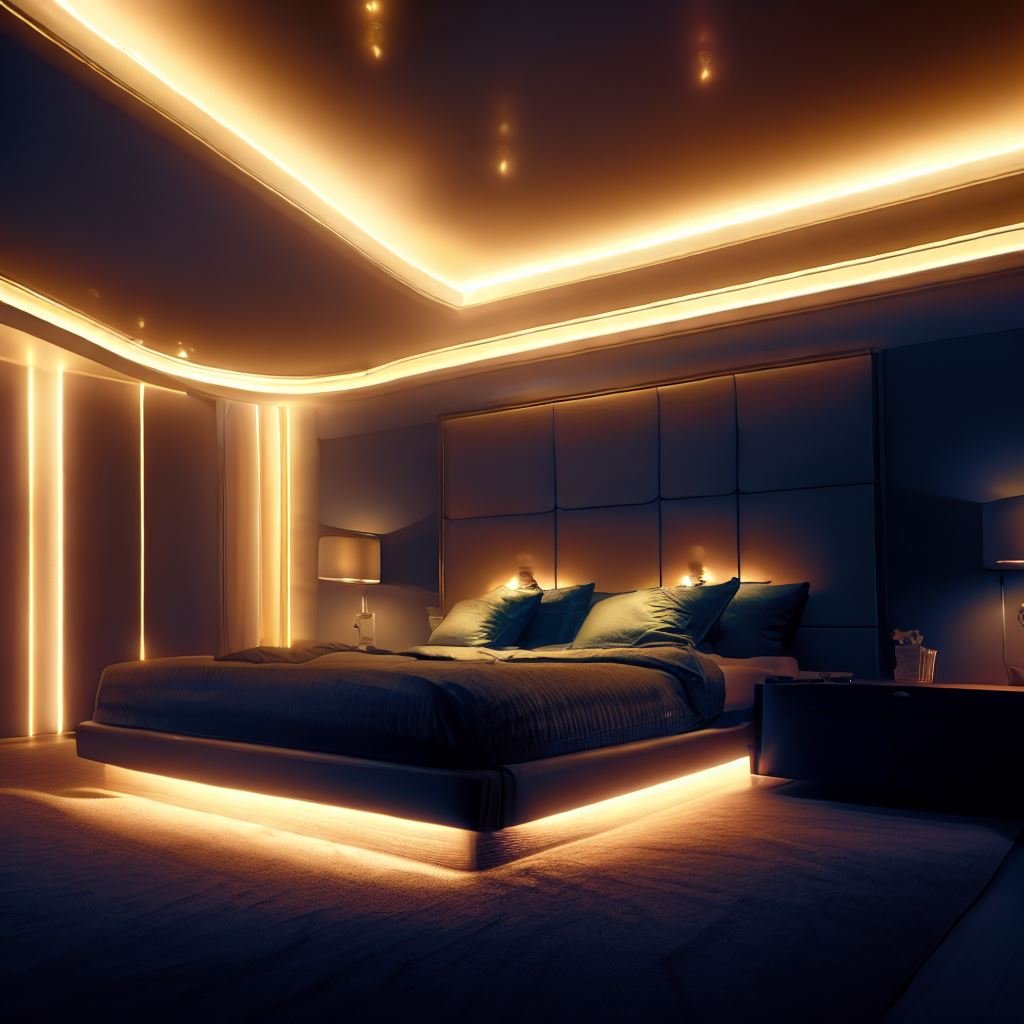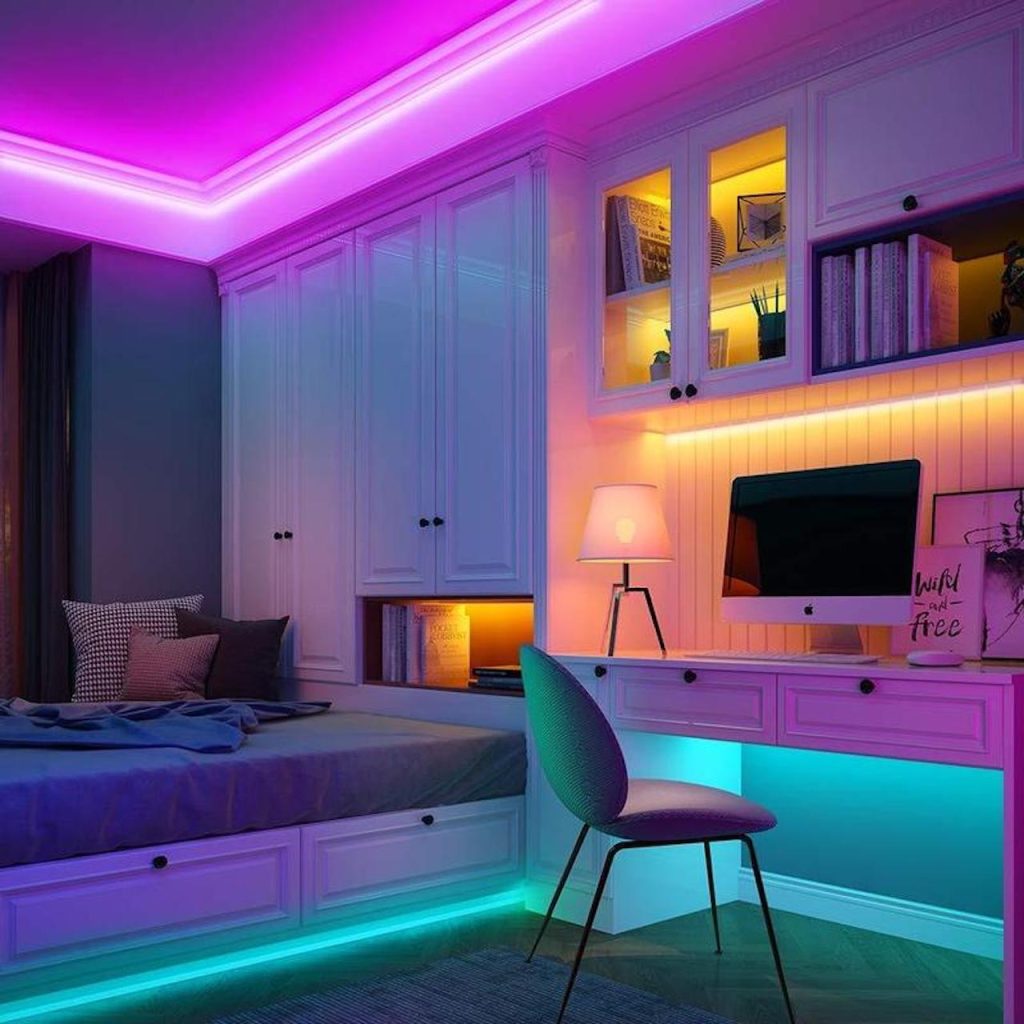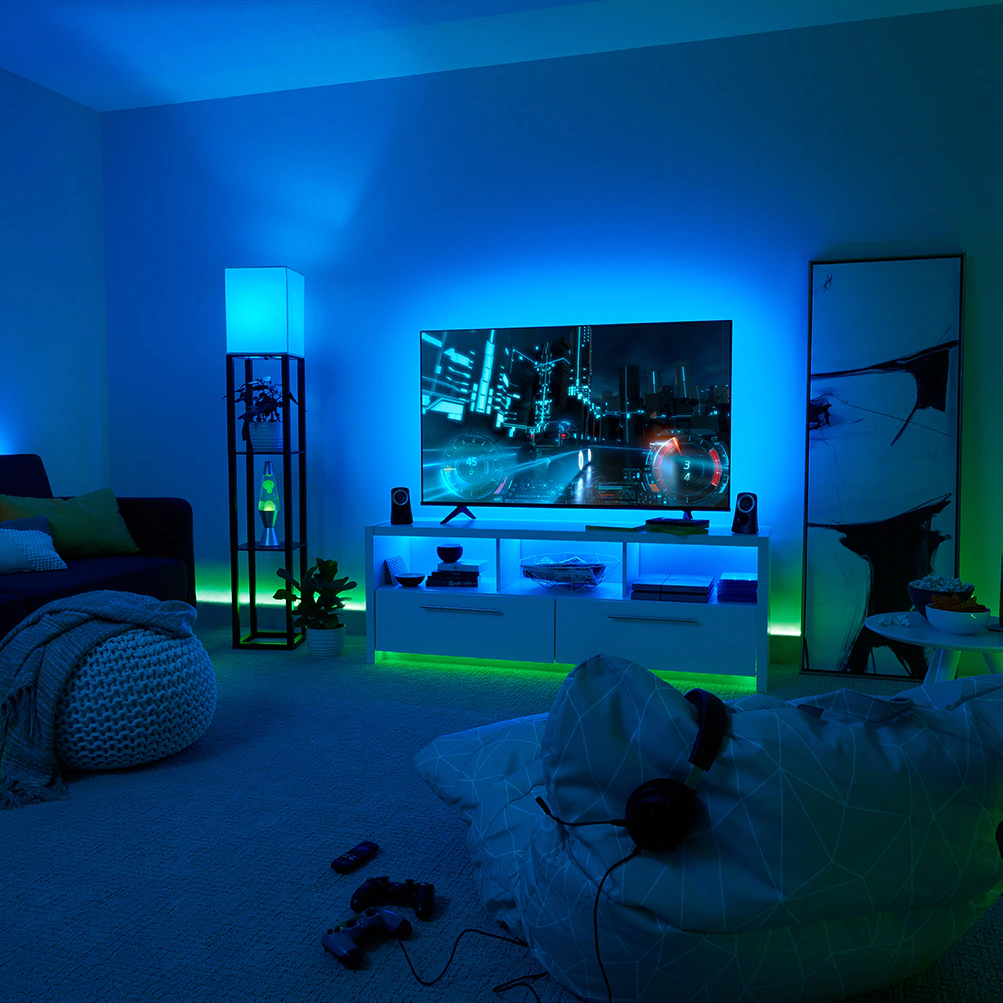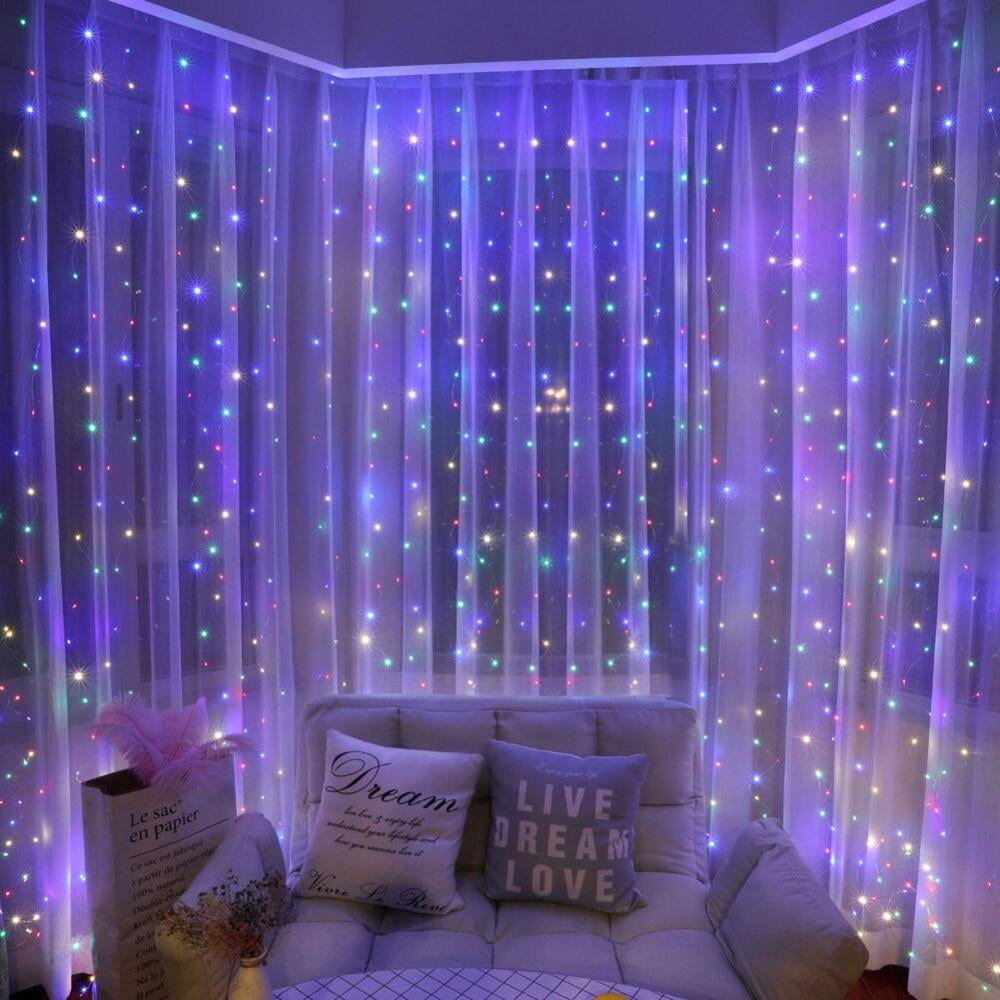How much do led lights cost to run? LED lights have gained popularity due to their energy efficiency and long lifespan. Understanding the cost to run LED lights is an important factor in determining their overall affordability and potential savings. In this guide, we will explore how to calculate the cost of running LED lights, considering factors such as wattage, operating hours, electricity rates, and the differences between LED lights and traditional lighting options. By grasping these concepts, you can make informed decisions about your lighting choices and efficiently manage your energy consumption. Let’s delve into the world of LED lights and discover their cost-effectiveness.

Efficiency of LED Lights:
LED lights are known for their exceptional energy efficiency compared to traditional lighting options like incandescent or fluorescent bulbs. LEDs convert a higher percentage of energy into light, resulting in less wasted energy as heat. They require significantly less wattage to produce the same level of brightness, making them more efficient and cost-effective in the long run.
Understanding LED Light Wattage:
LED light wattage refers to the amount of power consumed by the light bulb. Lower wattages indicate lower power consumption, contributing to energy efficiency and cost savings. Led strip lights come in a range of wattages, with each wattage corresponding to a specific level of brightness. Understanding the wattage of your LED lights is essential in accurately calculating their energy usage and cost.
Calculating Energy Consumption:
- To determine the cost of running LED lights, you need to consider both the wattage of the light bulb and the number of operating hours. The formula for calculating energy consumption is as follows:
- Energy Consumption (kWh) = (Wattage of LED Light × Operating Hours) / 1000
- For example, if you have a 10-watt LED light bulb running for 6 hours a day, the energy consumption would be:
- (10 watts × 6 hours) / 1000 = 0.06 kWh
Understanding Electricity Rates:
Electricity rates vary depending on your location and the utility provider. The rate is typically measured in kilowatt-hours (kWh) and can be found on your electricity bill. To calculate the cost of running LED lights, multiply the energy consumption (in kWh) by the electricity rate:
- Cost = Energy Consumption (kWh) × Electricity Rate
- For instance, if your electricity rate is $0.12 per kWh and the energy consumption of your LED light is 0.06 kWh (as calculated in the previous example), the cost would be:
- Cost = 0.06 kWh × $0.12 per kWh = $0.0072
- Therefore, it would cost $0.0072 to run that particular lights to led for 6 hours.
Comparing LED Lights to Traditional Lighting Options:
LED lights are significantly more efficient and cost-effective compared to traditional lighting options. Incandescent bulbs, for example, consume much more power and have a shorter lifespan than LED lights. By transitioning to LED lights, you can reduce energy consumption, lower electricity costs, and enjoy long-lasting lighting solutions.

Factors Affecting Cost to Run LED Lights:
Several factors can affect the total cost of running LED lights:
-
- Number of lights: The more LED lights you have, the higher the overall energy consumption and cost.
- Operating hours: The longer the lights are in use, the higher the energy consumption and cost.
- Electricity rates: Different regions and utility providers have varying electricity rates, which can affect the total cost.
- Energy-saving features: LED lights may come with additional features such as dimmability, motion sensors, or timers that can further reduce energy consumption and cost.
Additional Energy-Saving Tips:
To maximize energy savings and reduce the cost of running LED lights, consider implementing the following tips:
-
- Turn off lights when not in use.
- Utilize natural light through windows or skylights during the day.
- Install timers or motion sensors to automatically control lighting.
- Invest in dimmers to adjust brightness levels based on need.
- Regularly clean and maintain LED lights to ensure optimal efficiency.
Advantages of LED lights
LED lights have become increasingly popular in recent years due to their numerous advantages over traditional lighting options. LED (light-emitting diode) lights offer significant benefits in terms of energy efficiency, longevity, versatility, environmental impact, and overall cost-effectiveness.
Energy Efficiency:
One of the most significant advantages of LED lights is their exceptional energy efficiency. Compared to traditional incandescent bulbs, LEDs consume significantly lower amounts of electricity to produce the same level of brightness. LEDs convert a higher percentage of electrical energy into light instead of heat, minimizing energy waste, and reducing electricity bills. LED lights can achieve energy savings of up to 80-90% compared to traditional lighting options.
Long Lifespan:
LED lights are renowned for their long lifespan, providing significant cost savings over time. The average lifespan of an LED light can be anywhere from 20,000 to 50,000 hours or even more, depending on the quality and usage. This surpasses traditional incandescent and fluorescent bulbs by several multiples. Longer lifespan means fewer replacements and reduced maintenance costs, making LED lights a cost-effective lighting solution for both residential and commercial applications.

Versatility:
LED lights offer unparalleled versatility, available in a wide range of shapes, sizes, and colors to suit diverse lighting needs. LEDs can be designed to emit light in specific directions, making them highly adaptable for various lighting fixtures, including task lighting, accent lighting, ambient lighting, and decorative lighting. Additionally, LED lights can be dimmed, allowing for greater control over the lighting intensity and mood in different settings.
Environmental Impact:
LED lights are environmentally friendly and contribute to sustainable practices. They are free from toxic substances like mercury, which are present in traditional lighting options such as fluorescent and compact fluorescent bulbs. LEDs are also highly recyclable, reducing the overall waste generated by lighting systems. Additionally, LED lights consume less energy, reducing greenhouse gas emissions and their carbon footprint, leading to a smaller environmental impact.
Instant Illumination and Flicker-Free Lighting:
LED lights provide instant illumination, achieving full brightness as soon as they are switched on. Unlike some traditional lighting options, LEDs do not require warm-up time to reach maximum brightness, making them ideal for applications where immediate illumination is critical, such as motion-activated sensors or security lighting. Furthermore, led ceiling lights offer flicker-free lighting, providing a stable and comfortable lighting experience that reduces eye strain and fatigue.
Durability and Resistance to Shock and Vibration:
LED lights are highly durable and can withstand rough handling, shock, and vibration. Unlike traditional bulbs, LEDs do not have fragile filaments or glass components that can be easily damaged. This durability makes them ideal for applications where lighting may be subject to impact or vibration, such as outdoor lighting, industrial settings, or transportation systems. LED lights are more resistant to breakage and can withstand challenging environments.
Design Flexibility and Compact Form Factors:
LED technology allows for compact form factors and innovative design possibilities. The small size of LED chips enables the creation of sleek and space-saving lighting fixtures, allowing for greater design flexibility. LED lights can be integrated into a variety of shapes and materials, including flex strips, modules, and customized lighting solutions, enhancing creativity in lighting design and architectural applications.
Safety and Reduced Fire Hazards:
LED lights generate significantly less heat compared to traditional lighting sources. This reduced heat emission minimizes the risk of combustion and fire hazards, making LED lights a safer lighting option, particularly in confined or enclosed spaces. LEDs are cool to the touch, reducing the potential for accidental burns or overheating, further ensuring safety in residential, commercial, and industrial settings.

Conclusion:
Calculating the cost to run LED lights involves understanding energy consumption, LED light wattage, and electricity rates. LED lights are highly efficient and cost-effective compared to traditional lighting options, allowing for long-term energy savings. By using the formulas provided to calculate energy consumption and considering factors like operating hours and electricity rates, you can estimate the cost of running LED lights. Remember to explore additional energy-saving tips to maximize efficiency and reduce your overall lighting costs. Embracing LED lights as a lighting solution can contribute to both environmental sustainability and financial savings, making them a worthy investment for any space.
